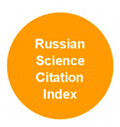Generational accounts and demographic dividend in Russia
Abstract
The paper presents a modern methodology for estimating the impact of different age groups on the production and distribution of national income, called national transfer (generational) accounts. The human economic lifecycle is divided into stages defined by the ratio of labour income to consumption. In middle ages the gained income is higher than current consumption. The resulting surplus of resources is supposed to cover the income deficit in older and younger age groups. Estimates of the deficit or surplus at different ages are made for the Russian population for 2013 based on the results of age profiles taken from administrative sources and surveys. In the paper we also estimate the projected changes in the lifecycle deficit under different demographic development scenarios. Age profiles of labour income and consumption are used to calculate the effective economic support and the influence of demographic changes in Russia on economic growth rates in the near future.
Downloads
References
Andreev E.M., L.E. Darsky (1986). Ekonomiko-demograficheskie protsessy v real'nykh pokoleniyakh [Economic and demographic processes in generations] // Demograficheskie protsessy i ikh zakonomernosti [Demographic processes and their patterns] / A.G. Volkov, ed. Moscow: Mysl’: 10-21.
Arthur W.B., G. McNicoll (1978). Samuelson, population and intergenerational transfers // International Economic Review. 241-246.
Auerbach A.J., J. Gokhale, L.J. Kotlikoff (1994). Generational accounting: a meaningful way to evaluate fiscal policy // Journal of Economic Perspectives. 8(1): 73-94.
Barro R.D., X. Sala-i-Martin (2004). Ekonomicheskiy rost [Economic growth]. Moscow: BINOM. Laboratoriya znaniy. 824 p.
Barro R.J. (1974). Are government bonds net wealth? // Journal of Political Economy. 82(6): 1095-1117.
Bloom D., D. Canning, J. Sevilla (2003). The demographic dividend: a new perspective on the economic consequences of population change. RAND Corporation. 127 p.
Bloom D., D. Canning, P. Malaney (2000). Demographic change and economic growth in Asia // Population and Development Review. 26 (Suppl.): 257–290.
Bloom D.E., J.G. Williamson (1998). Demographic transitions and economic miracles in emerging Asia // World Bank Economic Review. 12(3): 419 - 455.
Bommier A., R. Lee, T. Miller, S. Zuber (2010). Who wins and who loses? Public transfer accounts for US generations born 1850 to 2090 // Population and Development Review. 36(1): 1-26.
Caldwell J.C. (1982). Theory of Fertility Decline. New York: Academic Press. 386 p.
Chayanov A. (1989). Krest'yanskoe khozyaystvo [Peasant economy]. Izbrannye trudy [Selected works]. Moscow: Economica. 492 p.
D’Albis H., D. Moosa (2015). Generational economics and the national transfer accounts // Journal of Demographic Economics. 81(4): 409-441.
Diamond P. (1965). National debt in neoclassical growth model // The American Economic Review. 55(5): 1126-1150.
Feldstein M. (1974). Social security, induced retirement, and aggregate capital accumulation // Journal of Political Economy. 82(5): 905-926.
Goryunov E., L. Kotlikoff, S. Sinelnikov-Murylev (2015). Teoreticheskie osnovy byudzhetnogo razryva kak pokazatelya dolgosrochnoy fiskal'noy ustoychivosti i ego otsenka dlya Rossii [Theoretical foundations of fiscal gap as a long-term fiscal sustainability indicator and its estimates for Russia]. Moscow: Institut ekonomicheskoy politiki im. E.T. Gaydara: 60 p.
Kotlikoff L. (1992). Generational Accounting-Knowing Who Pays, and When, for What we Spend. New York: Free Press. 261 p.
Kotlikoff L.J., L.H. Summers (1981). The role of intergenerational transfers in aggregate capital accumulation // Journal of Political Economy. 89(4): 706-732.
Lee R., A. Mason (2006). Chto takoe demograficheskiy dividend? [What does it mean demographic dividend?] // Finansy i razvitie [Finance and Development]. URL: https://ntaccounts.org/doc/repository/LM2006_Russian.pdf (accessed: 22.12.2018).
Lee R., A. Mason (2011). Population aging and generational economics: key findings // Population Aging and the Generational Economy / R. Lee, A. Mason, eds. Cheltenham, UK: Edward Elgar Publishing: 3-31.
Lee R., A. Mason (2017). Tsena stareniya [Cost of aging] // Finansy i razvitie [Finance and Development]. URL: https://www.imf.org/external/russian/pubs/ft/fandd/2017/03/pdf/lee.pdf (accessed: 22.12.2018).
Lee R., T. Miller (2000). Immigration, social security, and broader fiscal impacts // American Economic Review. 90(2): 350-354.
Lee R., W. Arthur, G. Rodgers (eds) (1988). Economics of Changing Age Distribution in Developed Countries. New York: Oxford University Press. 221 p.
Lee R.D. (1980). Aiming at a moving target: Period fertility and changing reproductive goals // Population Studies. 34(2): 205-226.
Lee R.D. (1994). The formal demography of population aging, transfers, and the economic life cycle // Demography of aging: 8-49.
Lee R.D., S. Tuljapurkar (2000). Population forecasting for fiscal planning: Issues and innovations // Demography and Fiscal Policy / A. Auerbach, R. Lee, eds. Cambridge University Press: 7-57.
Mason A. (1988). Saving, economic growth, and demographic change // Population and Development Review. 14: 113-144.
Mason A., M. Lee, M. Abrigo, S. Lee (2017). Support Ratios and Demographic Dividends: Estimates for the World. New York (NY): Population Division, United Nations. 52 p.
Modigliani F. (1988). The role of intergenerational transfers and life cycle saving in the accumulation of wealth // Journal of Economic Perspectives. 2(2): 15-40.
Modigliani F., R. Brumberg (1954). Utility Analysis and the Consumption Function: An Interpretation of Cross Section Data // Post Keynesian Economics, ed. by K.K.Kurihara. Ruthers University Press New Brunswick New Jersey: 388-436.
Natsional'nye scheta Rossii v 2006-2013 godakh [National Accounts in Russia in 2006-2013] (2013). Statisticheskiy sbornik [Statistical Yearbook]. Moscow: Rosstat. URL: http://www.gks.ru/wps/wcm/connect/rosstat_main/rosstat/ru/statistics/publications/catalog/doc_1135087050375 (accessed: 22.12.2018).
Prskawetz A., J. Sambt (2014). Economic support ratios and the demographic dividend in Europe // Demographic Research. 30: 963-1010.
Samuelson P. (1958). An exact consumption loan model of interest with or without the social contrivance of money // Journal of Political Economy. 66(6): 467-482.
Sauvy A. (1977). Obshchaya teoriya naseleniya [General population theory]. Т.1. [V.1]. Moscow: Progress. 503 p.
Sistema natsional'nykh schetov 2008 [System of national accounts 2008] (2012). UN, European Commission, IMF, OECD, World Bank. New York. 827 p.
Temple J., J. Rice, P. McDonald (2017). Economics of Ageing Feature. Ageing and the economic life cycle: The National Transfer Accounts approach // Australian Journal of Aging. 36(4): 271–278.
United Nations (2013). National transfer accounts manual: Measuring and analysing the generational economy. New-York: United Nations.
Urlanis B.C. (1971). Ekonomicheskie aspekty demografii [Economic aspects of demography] // Problemy demografii [Demographic problems] // D.L. Broner, I.G. Venetskiy, eds. Moscow: 93-110.
Urlanis B.C. (1976). Narodonaselenie, issledovanie, publitsistika [Population, researches and essays]. Moscow: Statistika. 255 p.
Valkovics E. (1971). Ekonomicheskie vozrastnye piramidy [Economic age pyramids] // Marksistsko-leninskaya teoriya narodonaseleniya [Marx-Lenin population theory] / M. Valentei, ed. Moscow: Prosveshchenie: 127-149.
Willis R.J. (1988). Life cycles institutions and population growth: a theory of the equilibrium interest rate in an overlapping generations model // Economics of Changing Age Distribution in Developed Countries / R. Lee, W. Arthur, G. Rodgers, eds. New York: Oxford University Press: 106-138.




















